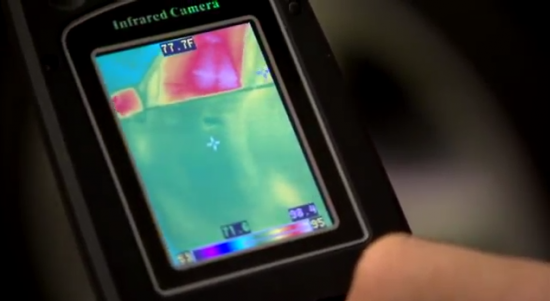Ford Uses Thermal Imaging to Develop Quieter Cars


Law enforcement agents use thermal imaging to track down bad guys in hiding. For about a year now, US car manufacturer Ford has been pioneering similar technologies to identify and eliminate air leakage from vehicle cabins to achieve more effective soundproofing, resulting in improved interior quietness.
William Dedecker, Ford's noise, vibration and harshness engineering supervisor, explains that the innovative technique can minimize the number of holes in the body structure. "This helps to improve the road noise, wind noise and powertrain noise. And it minimizes dust intrusion and water leaks", he says.
An additional benefit is that sealing air leaks help increase heating and cooling efficiency by reducing energy loss.
The way it works is that the vehicle interior is filled up with hot air, up to a temperature of 60 degrees Celsius, and an infrared camera then identifies the hottest points of the car. Those points indicate air leaks, which will contribute to a higher sound level inside the cabin of the car unless fixed.
Previously, Ford used other less advanced and more time-consuming methods, such as filling the vehicle with smoke in order to see where air was leaking, and also listening with medical stethoscopes to hear the whistle of escaping air.
Ford claims to be the first automaker to use the thermal imaging technology to track air leaks. See below a video explaining how Ford is applying the technology in their quest to design quieter vehicles.
To learn more about cars and sound/noise, get your copy of the Quiet Cars eBook - Your Guide to a Quieter Ride - plus join the Quiet Cars online community.


